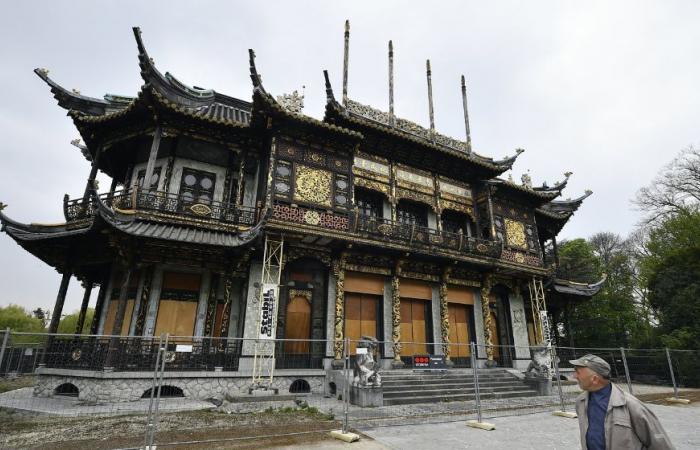Created on the initiative of King Leopold II and inaugurated in 1913 in Laeken, the Chinese Pavilion was closed a hundred years later, in 2013, due to stability and security problems.
The facades and in particular that which is parallel to Avenue Van Praet, which are not integrated into the structure of the building, tend to move, due, among other things, to the weight of the wooden elements which constitute the terraces . Since then, the building has, moreover, suffered water infiltration. These have since been brought under control, but this does not prevent a slow process of deterioration linked to vacancy.
Shortly before the elections, the federal government therefore gave the green light to the establishment of a non-profit organization bringing together the Régie des Bâtiments, the Ministry of Foreign Affairs, as well as the private sector which will put its hand in the portfolio in the form of patronage. The work is estimated to cost some 6 million euros. The new use of the Chinese Pavilion will be based on the general theme of the Silk Roads which have marked exchanges between the East and the West since Antiquity.
The monument’s influences are not exclusively Chinese. There are some of Japanese and Khmer Rouge inspiration. Concretely, there should be public cultural and tourist activities during the day, but also diplomatic objectives and friendly relations between Belgian and Asian companies. The pavilion annex could become a meeting place and exclusive events (conferences, meetings, dinners, cocktails, etc.) dedicated to Belgian-Chinese and Asian relations.
According to Diane Hennebert, one of the leaders of the non-profit organization set up to restore and operate the building, “it is not too late, but it is time”. Ms. Hennebert is known in particular for having directed the Wallonia-Brussels center in Paris, the Atomium at the time of its restoration, but also oversaw that of the Villa Empain. During a visit to the site in the presence of the Secretary of State for the Régie des Bâtiments Mathieu Michel, Diane Hennebert shared her “dream”: a redevelopment by the end of 2027, at occasion of 80 years of diplomatic relations between Belgium and China. She expressed another wish: to rename the Chinese Pavilion into “Silk Road Palace”.
■ Report by M. Arnoldussen and F. De Henau
Belga – Photo: Belga






